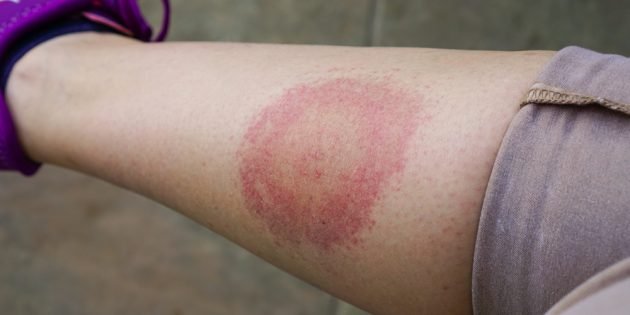You can listen to the article. If it's more convenient for you, turn on the podcast.
Ticks are most active in late spring and early summer. It is during this period that it is easiest to catch borreliosis (aka Lyme disease).
Lyme disease is a bacterial infection. Bacteria — borrelia — enter the human body from the salivary glands of a tick embedded in the skin. Fortunately, not everyone, but only the ixodic one.
This family is generally extremely unpleasant. In addition to Lyme disease, ixodes carry tick-borne encephalitis and some other diseases: babesiosis, tick fever. Therefore, it is advisable to take the parasite pulled out of the body to the laboratory to find out if it does not belong to a dangerous family. However, the analysis will not greatly affect further actions: as a rule, prevention begins before the results appear.
And even if the tick is ixodic, the chance to stay healthy remains.
Not every ixodic tick carries borrelia.
But if it is still contagious, the prospects are unpleasant. Tick-borne borreliosis is dangerous with complications Lyme disease / Mayo Clinic , which appear several weeks or even months after the bite. These include:
These complications can be deadly. Therefore, it is very important not to miss Lyme disease and not to refuse treatment.
The first sign of a possible infection is actually a tick bite. If you are lucky to remove an arthropod and take it to the laboratory — great: they will dispel or, on the contrary, strengthen your suspicions. But if it was not possible to dissect the bloodsucker in the laboratory, start carefully monitoring the skin and well-being.
A red convex spot and swelling, like a mosquito bite, is normal. Such a skin reaction, even if the swelling is large, passes in a few days and is not a sign of borreliosis.
An obvious symptom occurs at the site of the bite after 3-30 days.

This is the so—called erythema - a red spot surrounded by white and red rims. If you find it on the skin, contact your therapist urgently: you have tick-borne borreliosis.
However, not everyone infected with Lyme disease marks such a target. So other signs are also important.
In Lyme disease, a few days after the bite, appear Lyme disease / Mayo Clinic :
The presence of these symptoms does not say for sure about borreliosis. Perhaps the fever and aches are caused by other causes. But if you observe two or more signs in yourself and at the same time remember that you have recently been bitten by a tick, be sure to consult a doctor.
Consult a doctor, even if the symptoms have appeared and disappeared.
This also happens Lyme disease / Mayo Clinic in borreliosis. The disease continues to spread quietly in order to seriously ruin your life one day.
To begin with, it is necessary that the doctor make a diagnosis. Unfortunately, this may take time. If there is no obvious sign of erythema, Lyme disease is confirmed by a blood test. That's just it will have to wait, because antibodies to the disease are produced only a few weeks after the bite.
If the diagnosis is confirmed, the doctor will prescribe you antibiotics. Which ones, depends on your age and the prescription of the bite, as well as the severity of the symptoms. As a rule, is used Lyme disease / Mayo Clinic doxycycline, amoxicillin, cefuroxime, however, other options are possible. In difficult cases, when the disease has already affected the nervous system, antibiotics are prescribed intravenously.
Most often borreliosis is completely curable. To do this, you just need to start therapy on time.
But even after successful therapy, the so-called post-treatment Lyme disease syndrome can develop. It includes weakness, increased fatigue, regular pain in muscles and joints. Scientists don't know why this happens.
At first glance, the question sounds strange. This is if you don't know how insidious Lyme disease is.
Sometimes, after the detection of erythema, a person cannot immediately get to a therapist. Meanwhile, the erythema disappears, and the remaining symptoms manifest themselves so implicitly that the bitten decides: "I recovered myself!" And already consciously does not go to the doctor. This is a huge mistake.
Borrelia, without even making themselves felt, continue to multiply in the body, slowly affecting various organs and systems.
Problems with joints, heart, nervous system are gradually increasing. The patient, who has already forgotten about the bite, runs uselessly between a therapist, a cardiologist, a neurologist, a rheumatologist, who also do not understand what is happening. And if one day some particularly attentive doctor does establish the main cause of the diseases, it may be too late: borrelia will so corrode the body that it will be impossible to cure a person.
Hence an important rule: if there is the slightest suspicion of borreliosis, a check is necessary. And if the fears are confirmed, treatment is mandatory.
Lyme disease is one of those that is easier to prevent than to treat. Therefore, remember important safety rules.